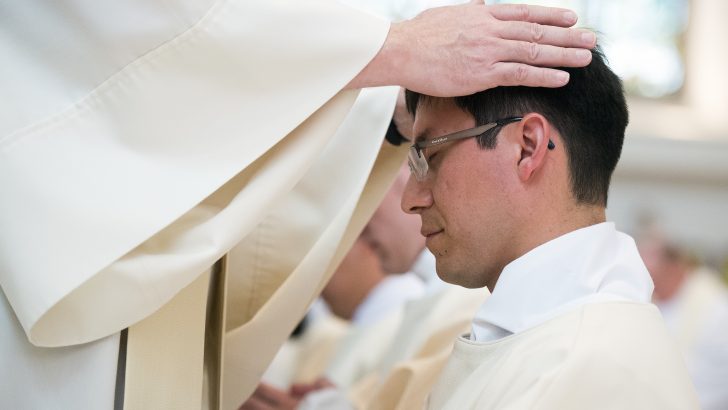The Church teaches that Christ is made visible through the ordained ministry, writes Cathal Barry
The redemptive sacrifice of Christ is unique, according to the Church, is accomplished once for all; yet it is made present in the Eucharistic sacrifice of the Church.
“The same is true of the one priesthood of Christ,” the Catechism of the Catholic Church states, “it is made present through the ministerial priesthood without diminishing the uniqueness of Christ’s priesthood”.
“Only Christ is the true priest, the others being only his ministers” (St Thomas Aquinas).
The Church teaches that Christ has made of the Church “a kingdom and priests to serve his God and Father”.
“The whole community of believers is, as such, priestly,” the Catechism states.
“The faithful exercise their baptismal priesthood through their participation, each according to his own vocation, in Christ’s mission as priest, prophet, and king,” the key teaching document says.
Through the sacraments of Baptism and Confirmation the faithful are “consecrated to be… a holy priesthood” (Second Vatican Council).
The Church teaches that the ministerial or hierarchical priesthood of bishops and priests, and the common priesthood of all the faithful participate, “each in its own proper way, in the one priesthood of Christ”.
While being “ordered one to another,” they differ essentially, according to the Second Vatican Council.
“While the common priesthood of the faithful is exercised by the unfolding of baptismal grace – a life of faith, hope, and charity, a life according to the Spirit – the ministerial priesthood is at the service of the common priesthood,” the Catechism states.
Holy Orders
“It is directed at the unfolding of the baptismal grace of all Christians. The ministerial priesthood is a means by which Christ unceasingly builds up and leads his Church. For this reason it is transmitted by its own sacrament, the sacrament of Holy Orders.”
Through the ordained ministry, especially that of bishops and priests, “the presence of Christ as head of the Church is made visible in the midst of the community of believers”. In the beautiful expression of St Ignatius of Antioch, the bishop is typos tou Patros: he is like the living image of God the Father.
The Church warns that “this presence of Christ in the minister is not to be understood as if the latter were preserved from all human weaknesses, the spirit of domination, error, even sin”.
“The power of the Holy Spirit does not guarantee all acts of ministers in the same way. While this guarantee extends to the sacraments, so that even the minister’s sin cannot impede the fruit of grace, in many other acts the minister leaves human traces that are not always signs of fidelity to the Gospel and consequently can harm the apostolic fruitfulness of the Church,” the Catechism states.


 Cathal Barry
Cathal Barry